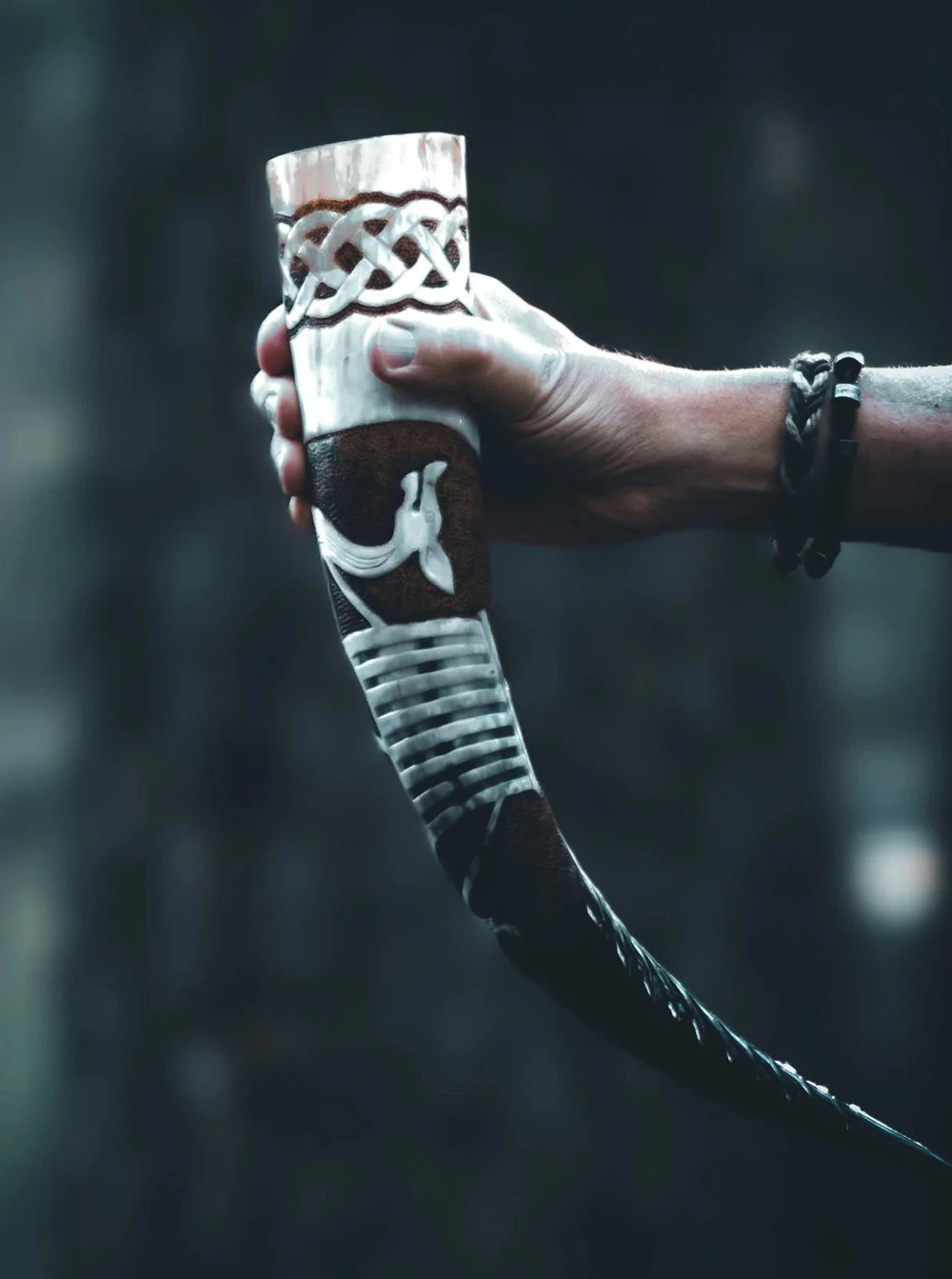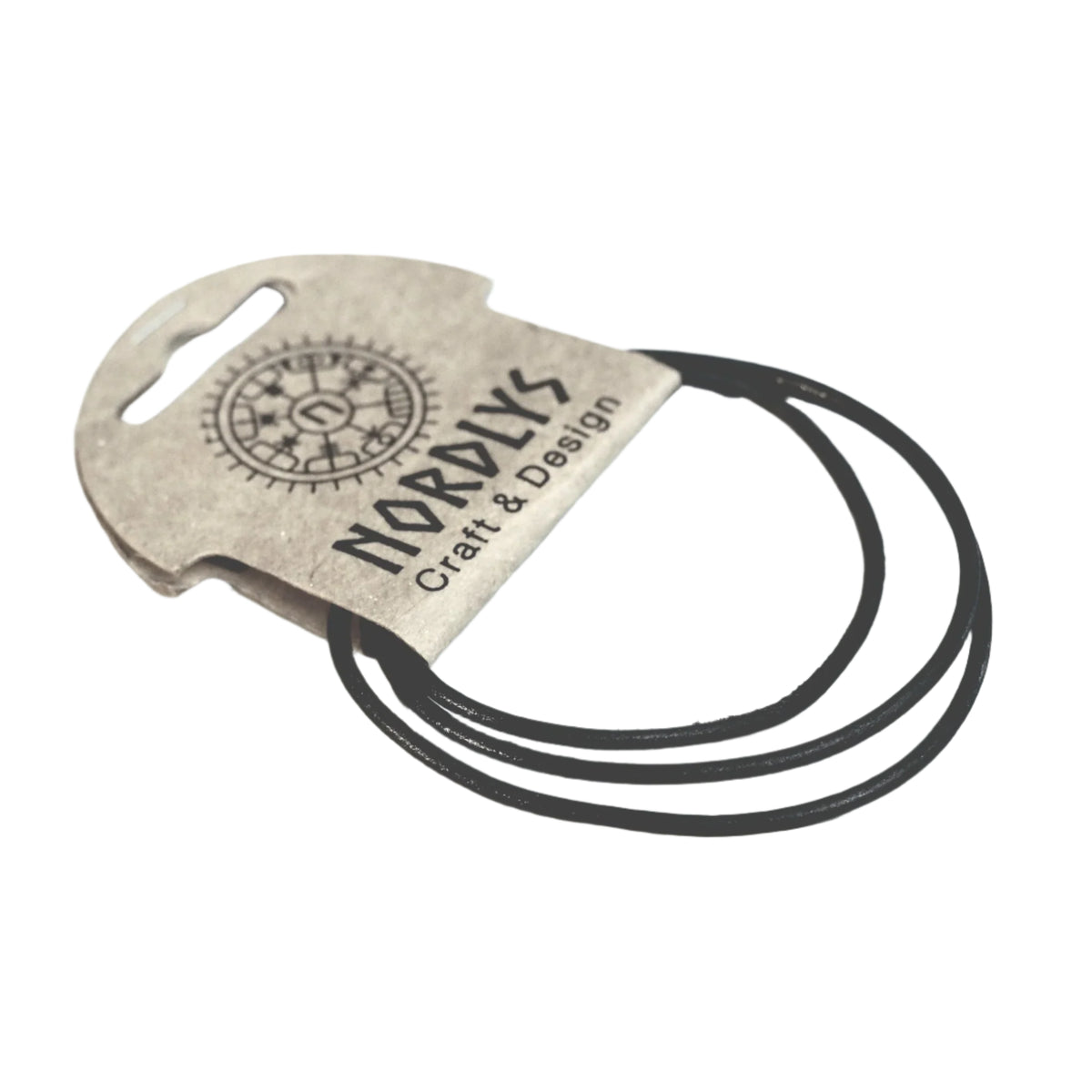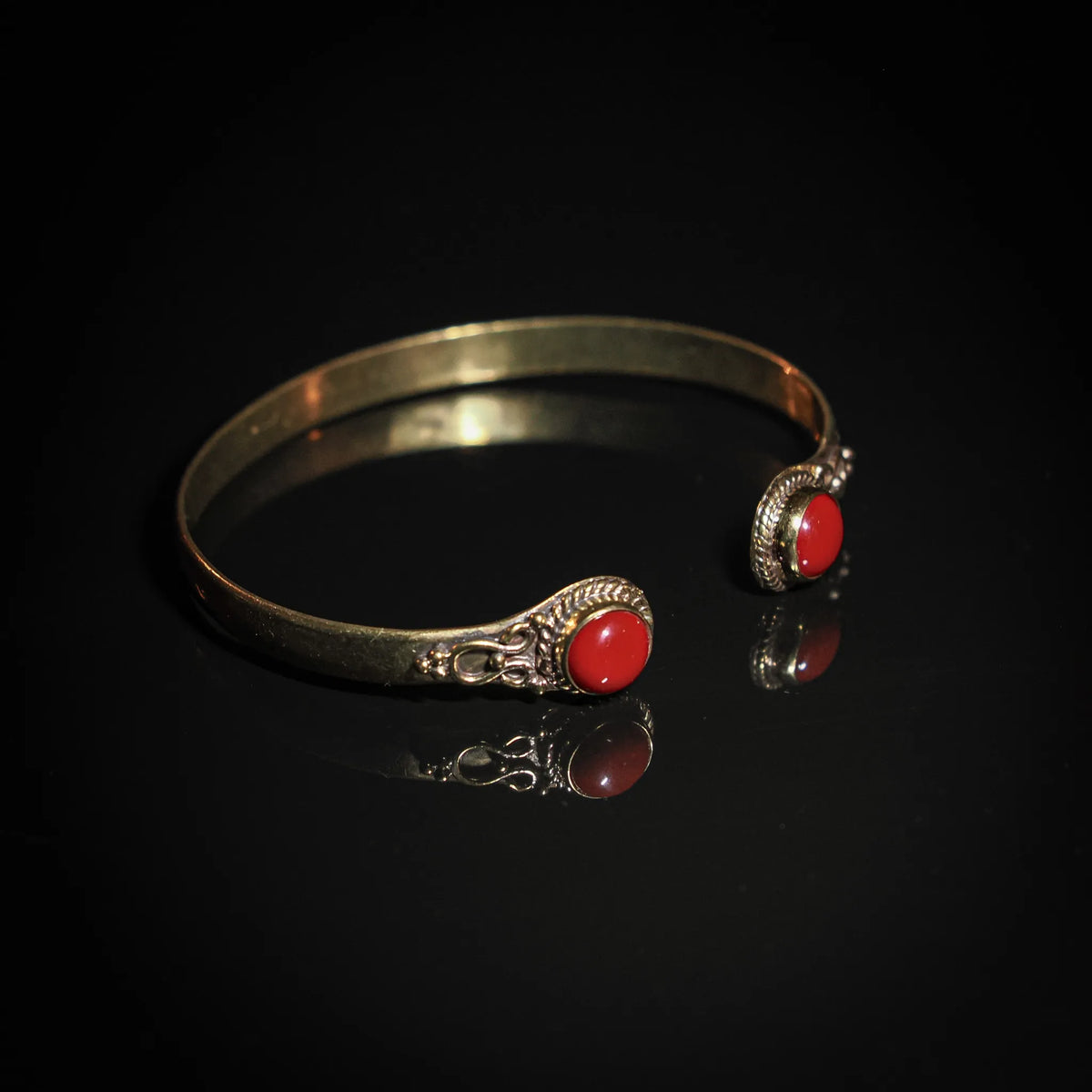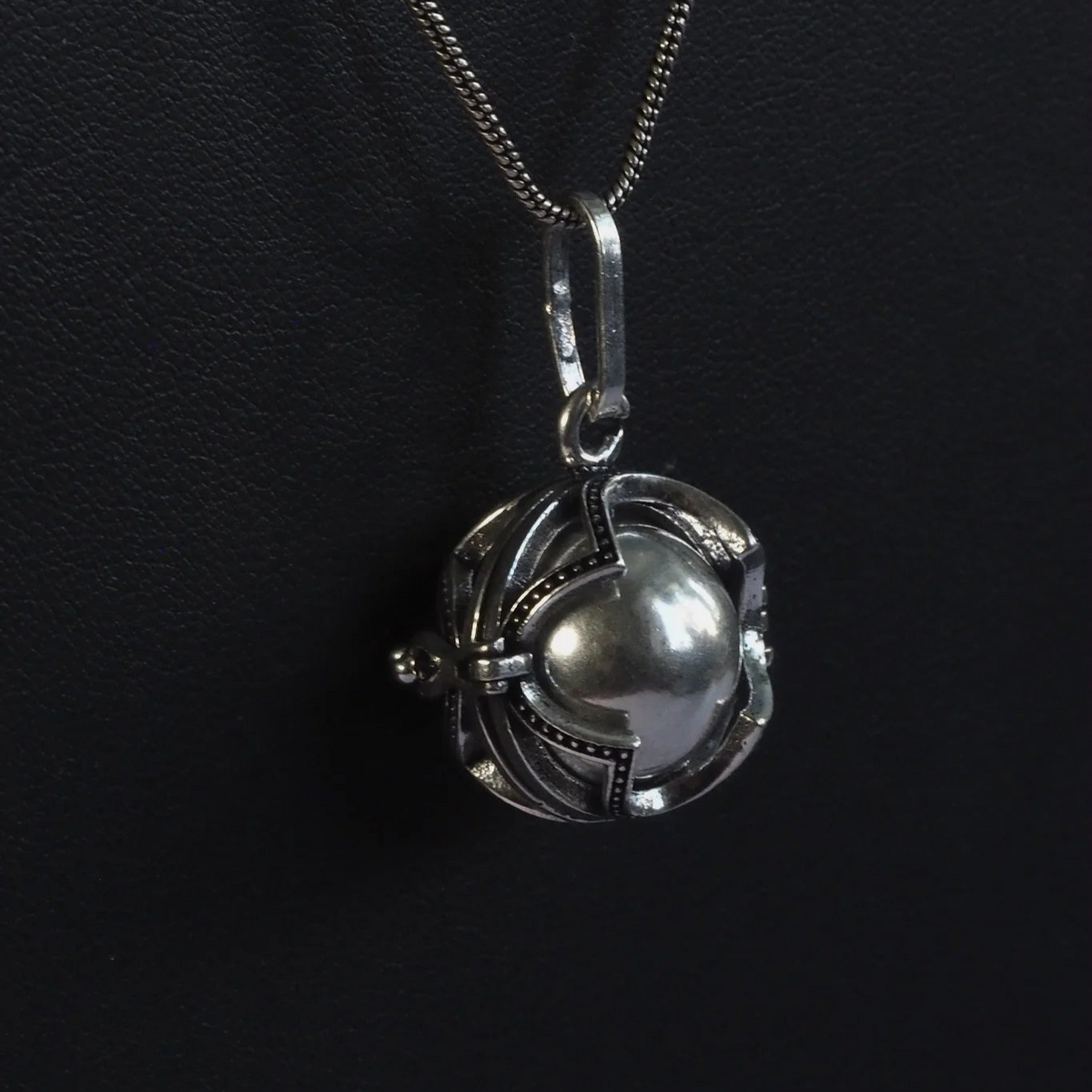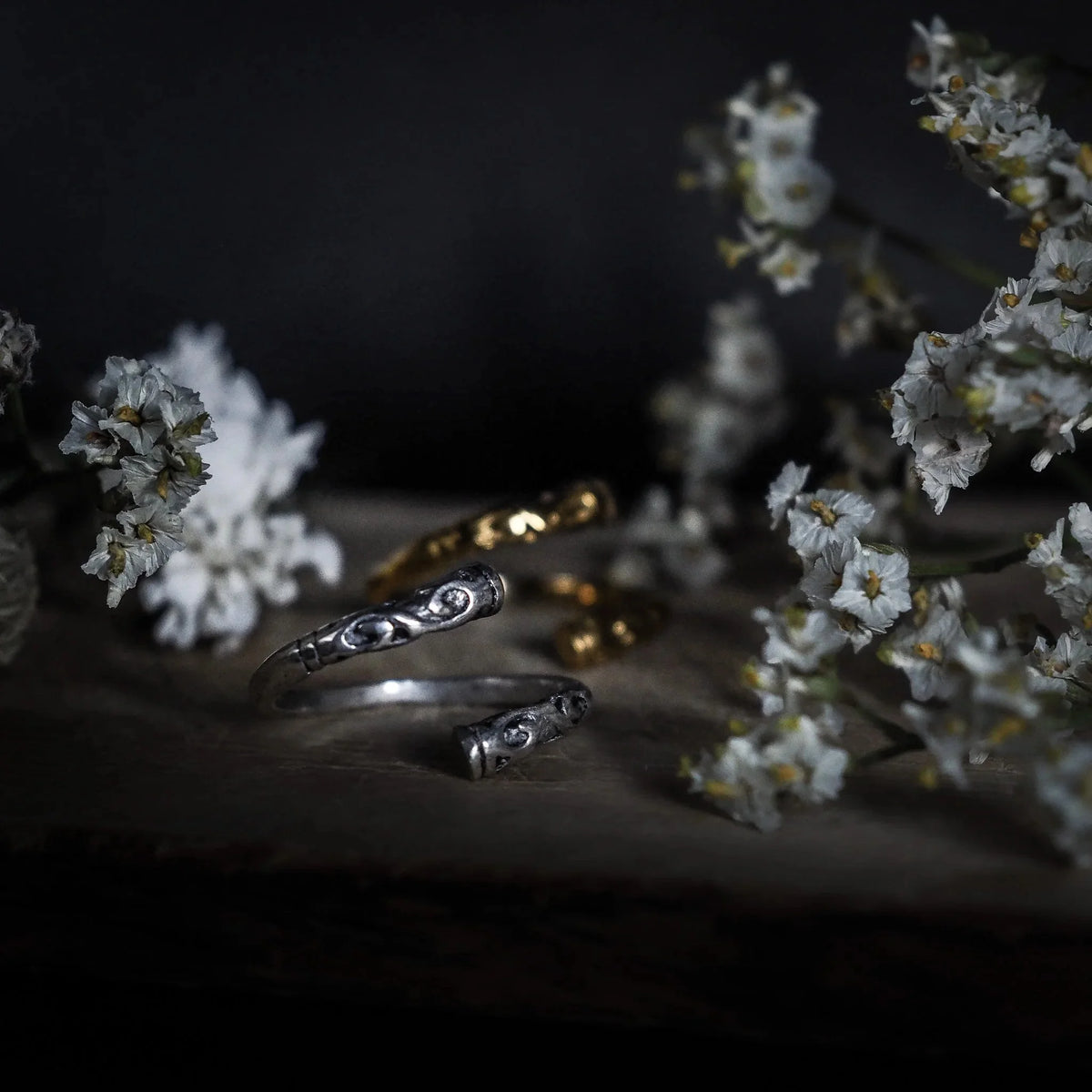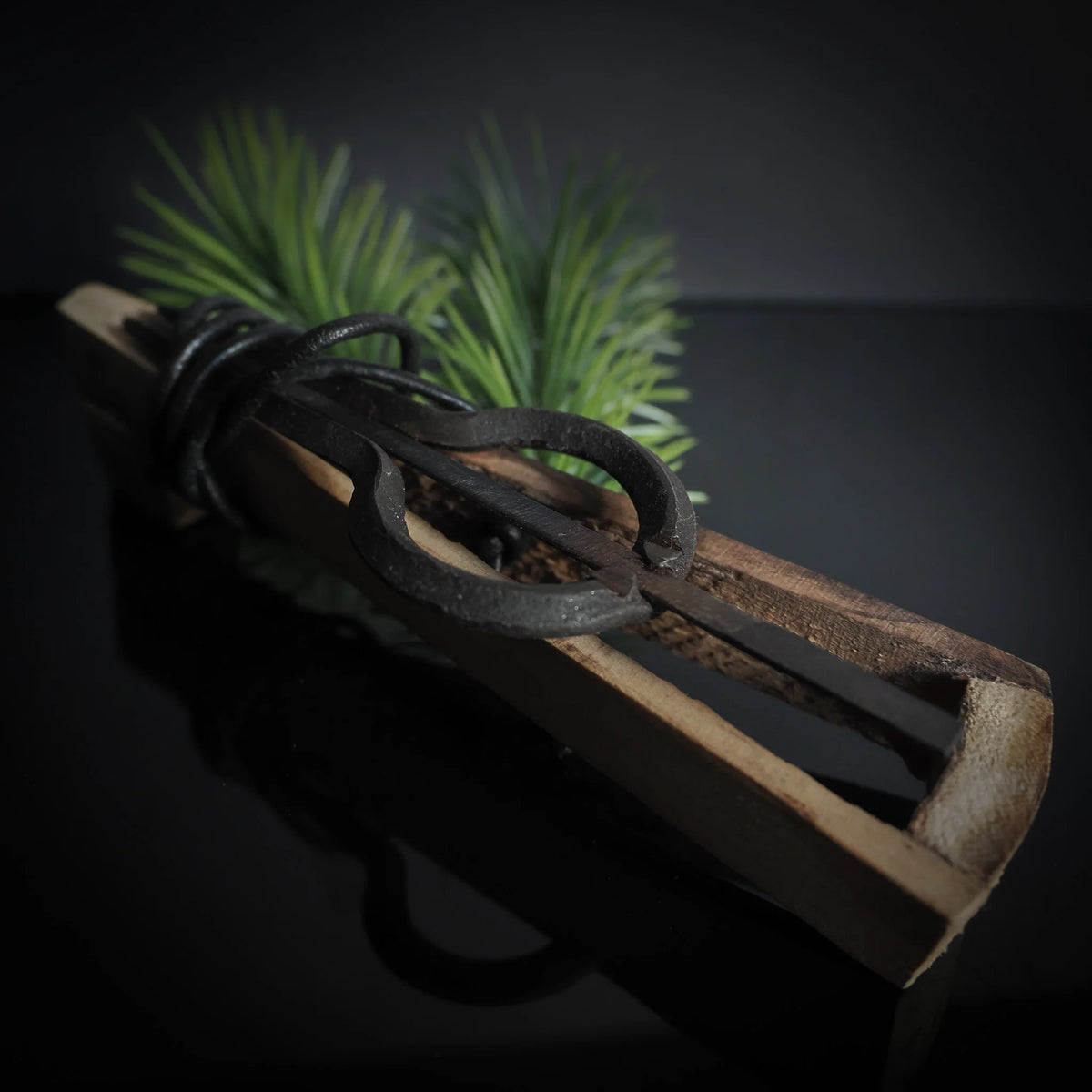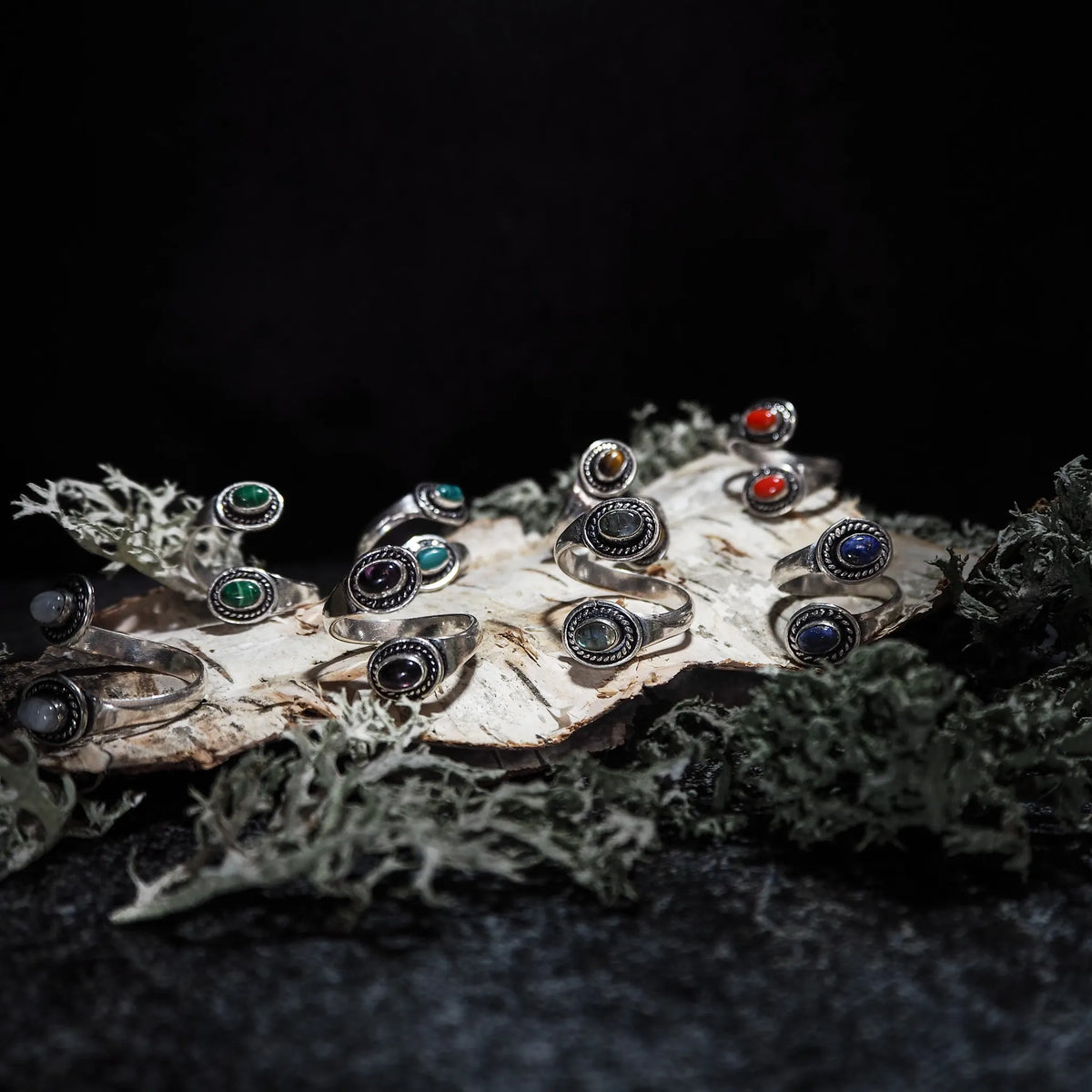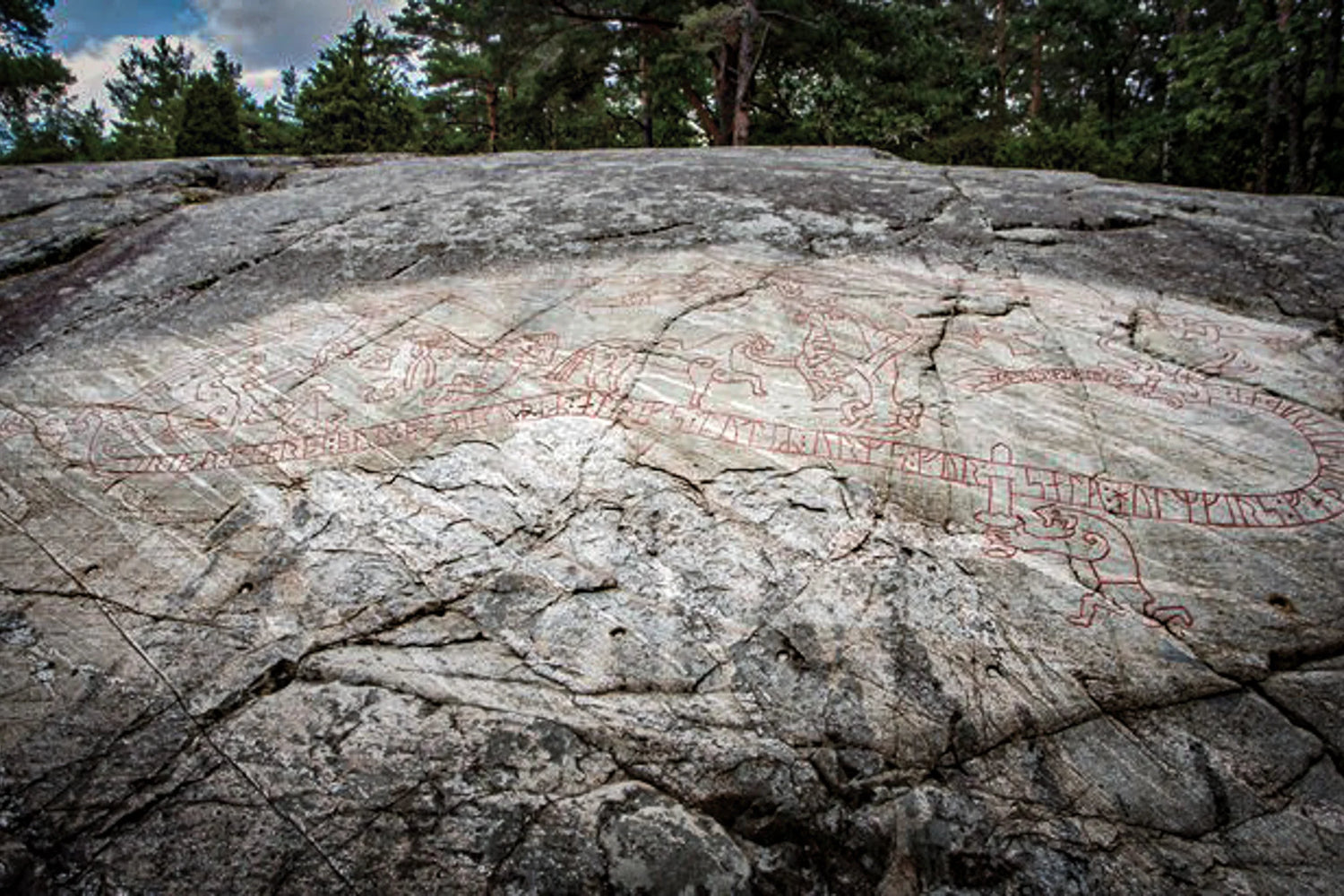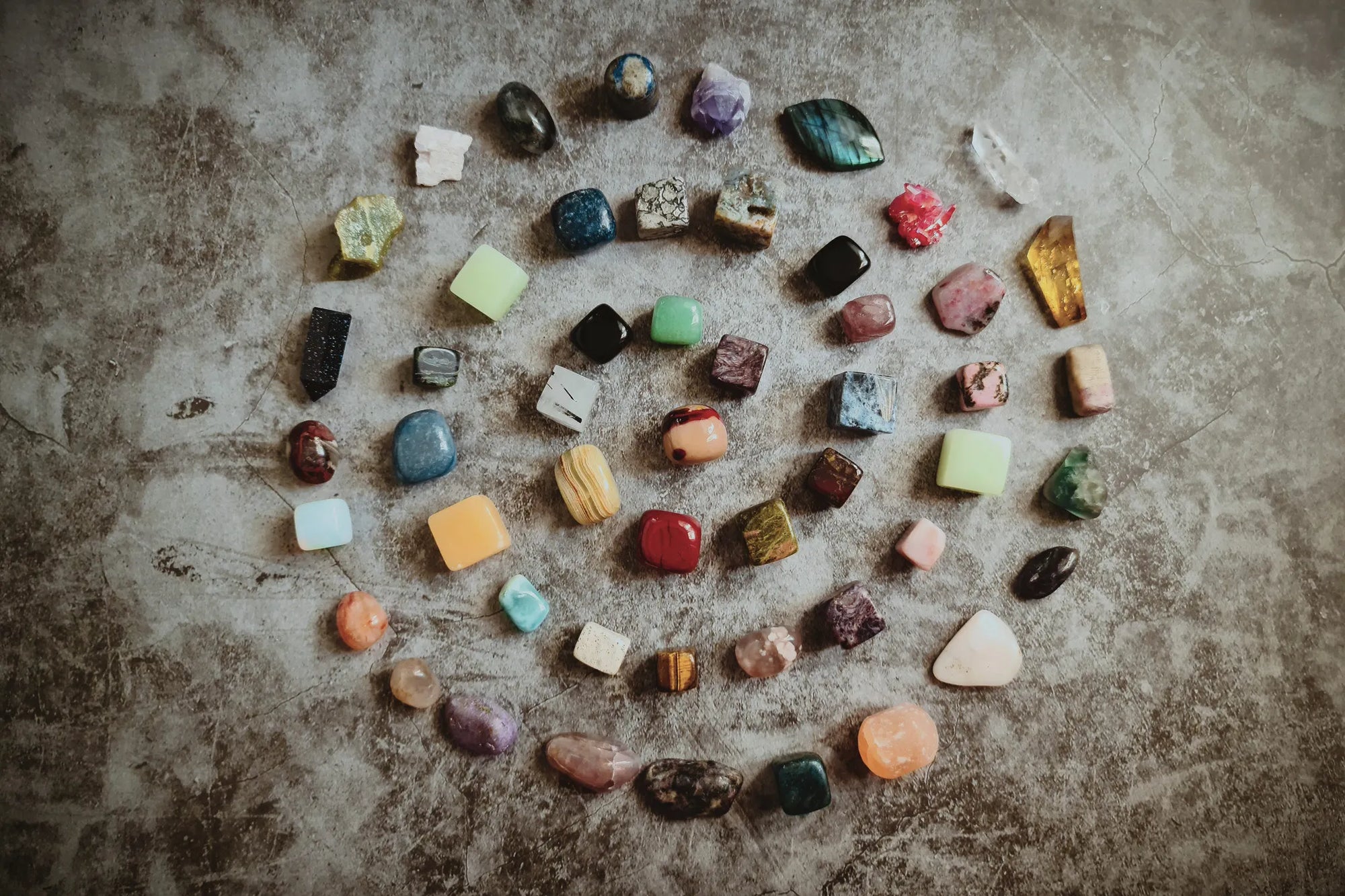Sö 101 Sigurd in Ramsundsberget
This is perhaps the most famous of all Sweden's runic inscriptions, second only to the Rökstenen in Östergötland. It is of course due to the beautiful suite of images with scenes from Sigurdsagan , but also the special location and kinship with the runestones Sö 106 in Kjula and U 617 at Bro church in Uppland.
As a curiosity, it can be mentioned that there is a representation of this carving in the floor of the gold room at the History Museum in Stockholm. What could fit better in such a place, if only one knows the tale of Sigurd?
Runhällen is located near Sundbyholm just north of Eskilstuna. If you want to take a look, just follow the signs from the road that leads to Sundbyholm, and there are also more rune stones nearby for those interested.
In connection with the carving, there are clear signs posted with fact-packed information not only about the runes, but also about the surroundings and Sigurdsagan.
The Saga of Sigurd
Sigurd grew up with King Hjalprek in Denmark. His father had been murdered and then his mother remarried Hjalprek's son Alf. Sigurd was raised to manhood by the king's blacksmith, who was a dwarf named Regin. As the years passed, Sigurd grew into a stately young man that few could match, and his strength and bravery were widely known. One day Regin called Sigurd to her and told him the story of her life.
Regin's father's name was Reidmar, and he was one of the richest dwarves. Regin's brothers were called Fafner and Utter. Otters could assume animal form and used to hunt and fish transformed into an otter. One afternoon, Otter was lying on the beach in his animal form eating salmon. Then the aesirs Odin, Höner and Loki came by, who did not know who the otter really was. They wanted to spend the night with the rich Reidmar, but they could not get there without gifts, so Loki threw a stone at Utter, who died. The animal was then skinned and then handed over to Reidmar. He of course saw who they had killed and was overcome with grief and anger. Therefore, he demanded a large man's penance - the skin would first be filled with gold, and then it would be completely covered on the outside.
Nearby lived the stormy dwarf Andvare, who could also transform into animals. Loki set off and managed to capture Andvare when he was a pike. He took the dwarf's gold as payment to set him free. But Andvare tried to sneak away a magic gold ring. Loki saw that and demanded this too. Then Andvare pronounced a curse on the whole treasure, and especially the ring. Whoever owned Andvare's gold would always suffer death and misfortune.
With the treasure, Loki could pay the man's penance, but he kept the ring. When Reidmar examined the otter skin, he saw that it was not completely covered in gold – a whisker was sticking out. Then Loki put Andvar's dear ring there, and they were free.
However, the treasure was cursed, and Reidmar was murdered by his son Fafner who wanted all the gold for himself. Then Fafner transformed himself into a dragon, took the treasure with him to the terrible Gnitaheden, and laid down to guard the gold.
Regin told Sigurd all this. Regin wanted revenge, but he couldn't himself. Therefore he now asked for Sigurd's help. As a reward, Sigurd would receive the horse Grane and the magical sword Gram. With these gifts, Sigurd could then ride away and avenge his father's murderer. When that was done, Sigurd would help Regin and kill Fafner.
Said and done. When Sigurd finished his work, he went to Gnitaheden to find the dragon. Every day Fafner used to drag himself down to a small lake to drink, and where the dragon's body was dragged out a path had formed. Sigurd dug a pit in the path and lay down in it to wait for the dragon with his sword drawn. Then came a bearded man in gray clothes with a walking stick and a peaked hat - Odin. He wanted to help Sigurd and advised him to dig more pits where the blood could flow out, otherwise Sigurd could drown in all the dragon blood.
Soon the dragon came, and Sigurd drove the sword Gram right up to the hilt when the heart was right over him. In the dragon's fight to the death, Fafner recalled the curse that rested upon the treasure. When the dragon was dead, Regin suddenly jumped out of hiding. He praised Sigurd and asked him to roast the dragon's heart. Sigurd did as he was asked while Regin went to rest for a while. To feel whether the heart was ready, Sigurd put his finger to it, but burned himself. Instinctively he put his finger in his mouth and then tasted dragon blood. This made him suddenly understand what the birds were singing.
The little birds in the trees whispered that Regin had betrayed her mind, so Sigurd went all sonic and cut the dwarf's head off. Once again Andvare's ring had brought with it those who had been friends and relatives killed each other. The treasure thus became Sigurd's, but he too was affected by the curse. But that's another story...
| The runes found in the giant serpent's body read "Sigrid made this bridge, Alrik's mother Orm's daughter, for the soul Holmgers Sigröd's father her husband." The interpretation of this is that Sigrid, a powerful Viking woman, had a bridge made for Holmger's soul to enter heaven. In connection with the construction of the bridge, she also had the carving erected. |

